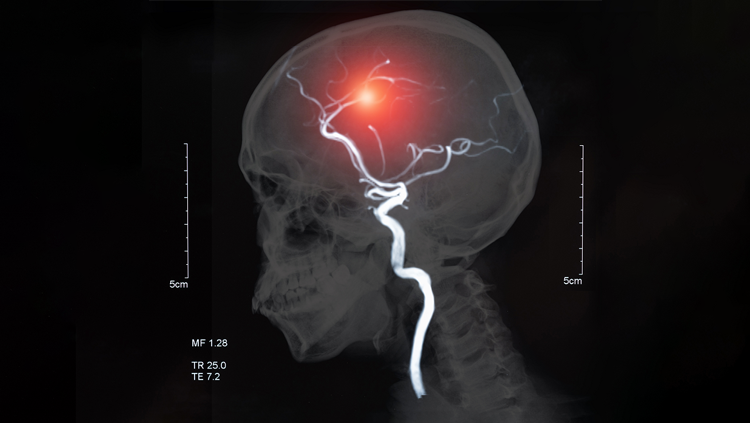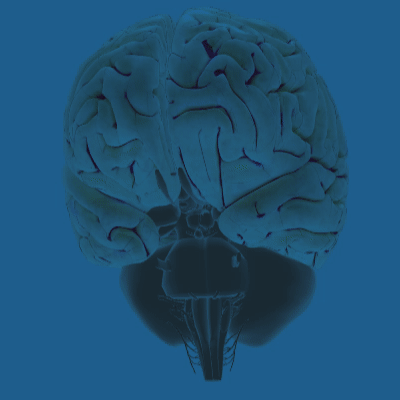What Are the Different Types of Stroke and How Do They Affect the Brain?
- Published19 Nov 2018
- Reviewed19 Nov 2018
- Author Michael W. Richardson
- Source BrainFacts/SfN

Strokes are scary. One moment, you may be having a normal, healthy day — then part of your brain begins to fail. You might lose your speech, or your vision, or any number of brain functions that you had taken for granted. But many people don’t even know what a stroke is or how it is related to the brain. Mark Goldberg, chair of the department of Neurology and Neurotherapeutics at UT Southwestern Medical Center, explains the types of stroke, how they differ from one another, and how they are treated.
What is a stroke, and what are the typical effects?
When any of the major blood vessels connected to your heart is blocked, we call it a heart attack. You can think of a stroke as a “brain attack.” A stroke is an interruption in brain function caused by a lack of blood flow to the brain. Your brain needs the oxygen carried by blood to function properly, so if it is cut off for any reason, it can’t operate as it’s supposed to. While blocked or burst blood vessels can occur elsewhere in your body, they are particularly serious in the brain.
The effects of a stroke are determined by the location where it occurs. If someone suffers a stroke in the left hemisphere of the brain, for example, where the speech center is located, their speech or ability to comprehend language may be hindered. Similarly, if blood is cut off to the visual processing center of the brain, vision is directly affected. In the course of studying stroke patients for hundreds of years scientists have learned a lot about what different regions of the brain are responsible for which functions, because we can see which areas are damaged and assess the symptoms. For example, we first learned that the language processing area of the brain is in the left hemisphere because strokes in that area cause deficiencies in speaking or understanding language.
Are there different kinds of stroke?
There are two basic kinds of stroke. If a blood vessel in the brain bursts, it’s called a hemorrhagic stroke. If a blood vessel is blocked, by plaques or other matter, and blood is cut off, it’s called an ischemic stroke.
Ischemic strokes are far more common than hemorrhagic strokes — out of the 850,000 strokes in the United States every year, they account for around 86 percent. Blockages can occur in a variety of ways. Sometimes, atherosclerotic buildup (also known as plaque) in the brain can narrow a blood vessel over time, cutting off blood flow. In other circumstances, a clot elsewhere in the arteries can break loose and be carried with the blood to the brain, where it becomes caught in narrower arteries. People with irregular heartbeats are especially susceptible to this kind of stroke.
A hemorrhagic stroke is rarer, but much more serious than an ischemic stroke. Blood vessels usually burst in places where the walls of the blood vessels begin to thin, whether from high blood pressure or lifestyle factors such as taking drugs. When they burst in the head, blood can begin to pool inside the skull. If the bleeding occurs inside the brain itself, it’s further classified as an intraparenchymal hemorrhage, and these are perhaps the most serious. The pooling of blood creates pressure — pressure that can crush your brain within the skull unless it is relieved as soon as possible.
How are the two types of strokes treated?
It’s imperative that physicians quickly determine which kind of stroke a patient has. A computerized axial tomography, or CAT scan, lets us see the location and the type of stroke and then develop a treatment accordingly. Ischemic strokes are treated with a basic clot-busting drug, or sometimes a catheter to remove the clot. Hemorrhagic strokes are much more serious — we have to race to make sure the patient is stable, and often need to perform surgery to repair the blood vessel.
If a stroke is identified and treated immediately, there is a very good chance that the patient will recover any lost functions, at least partially thanks to the brain’s natural plasticity. While it can’t necessarily regrow the cells that may die during a stroke, the brain’s ability to change throughout your life allows it to rewire itself, rerouting and rebuilding circuits to restore some of the lost function. One of the great challenges of neuroscience today is to understand how this plasticity occurs, and how to use this information to promote recovery after a brain injury.
This question was answered by Mark Goldberg as told to Michael Richardson for BrainFacts.org.
BrainFacts.org welcomes all your brain-related questions.
Every month, we choose one reader question and get an answer from a top neuroscientist. Always been curious about something?
Please submit your question by filling out this form.








